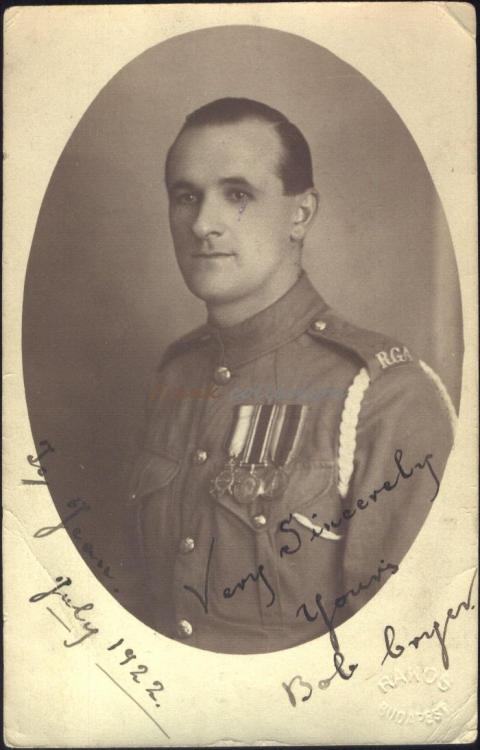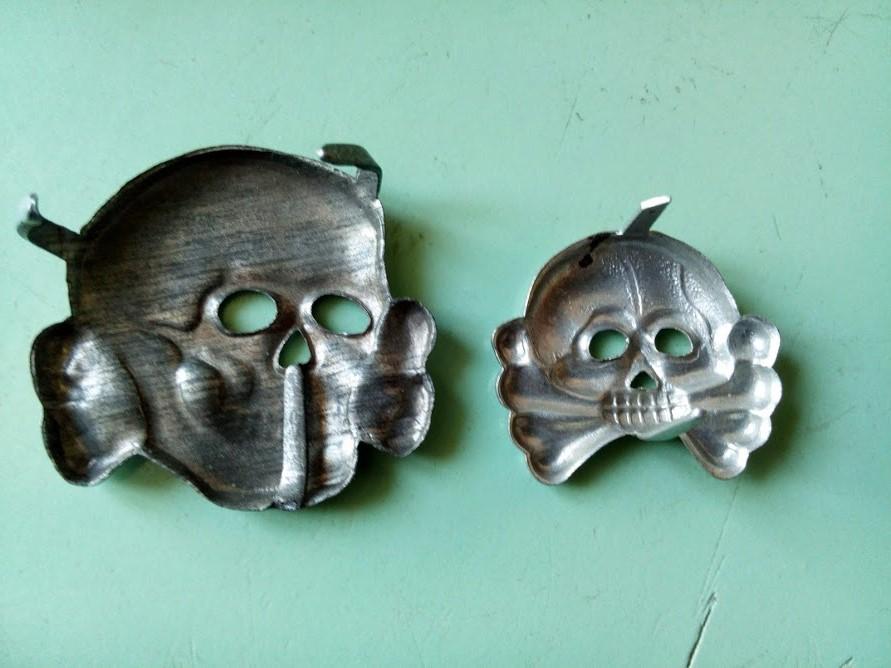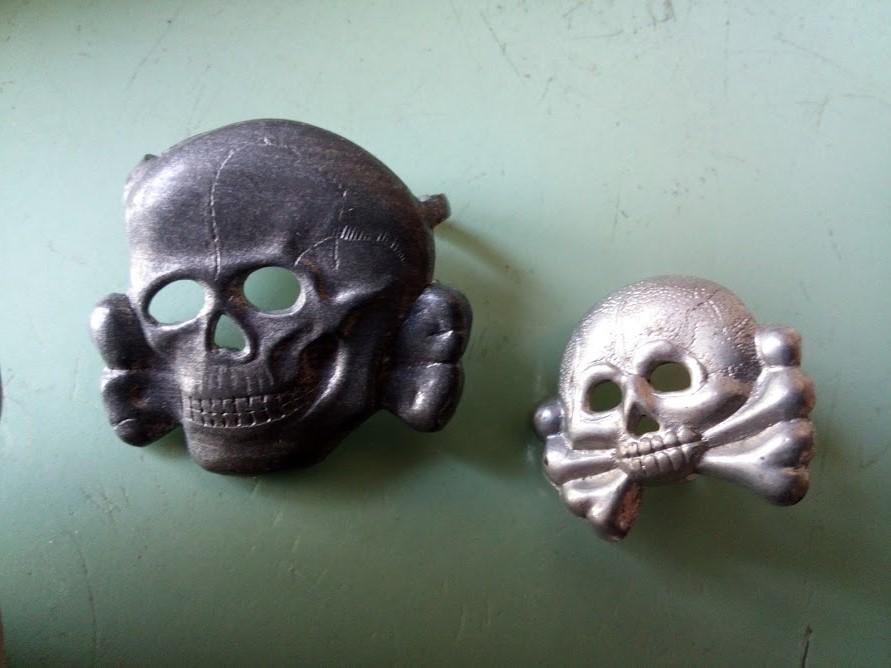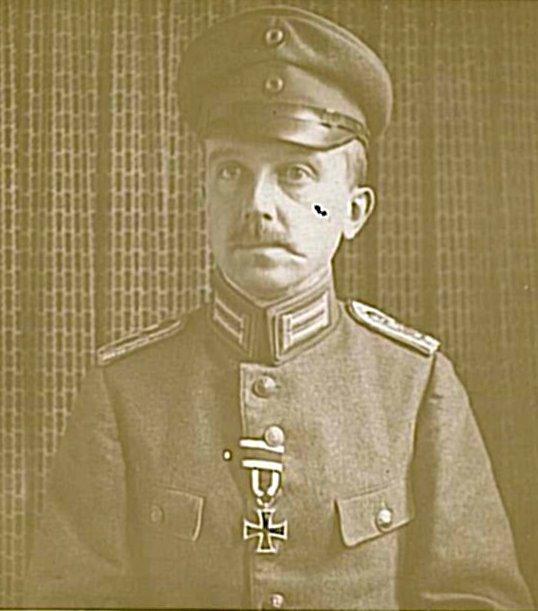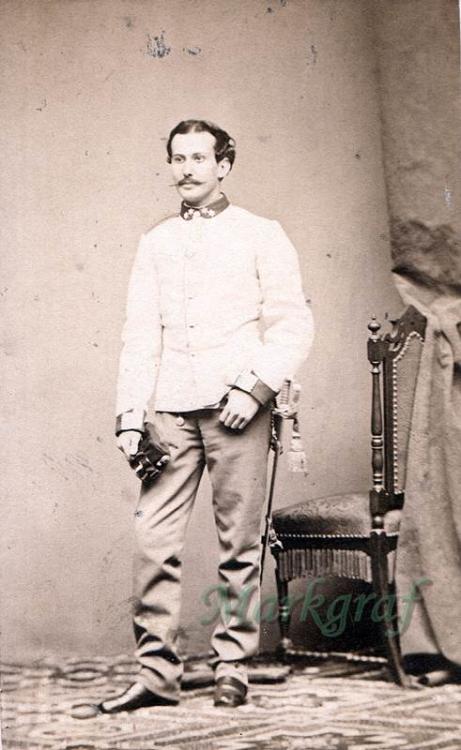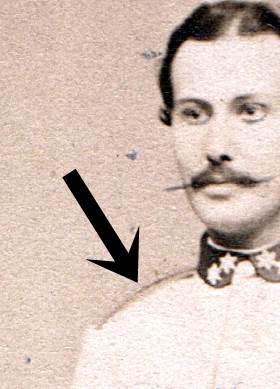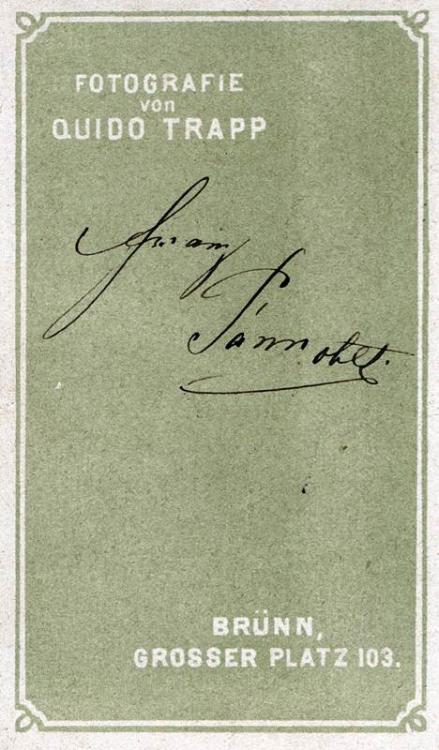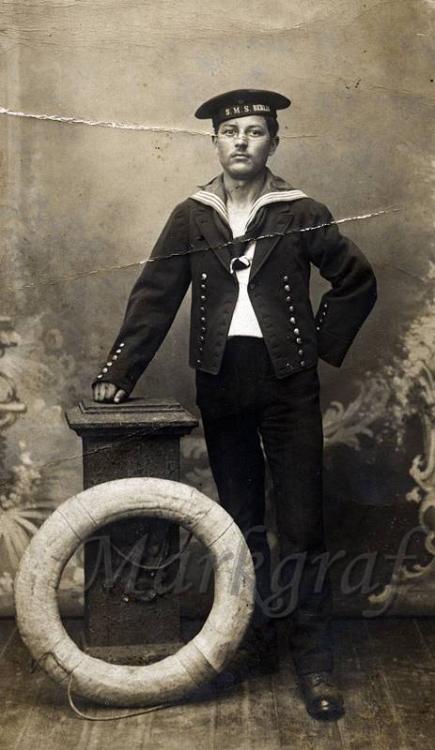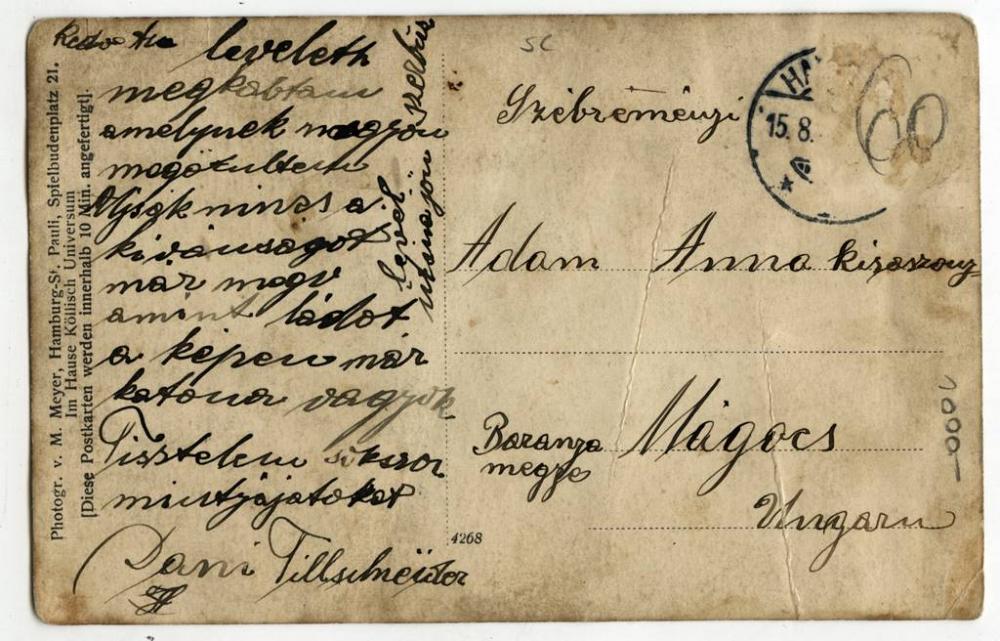-
Posts
564 -
Joined
-
Last visited
Content Type
Profiles
Forums
Blogs
Gallery
Events
Store
Everything posted by Markgraf
-
Thank you for the answer!
-
-
Hi Gentlemans! A fellow collector sent to me this picture. A fine portrait of a Royal Garrison Artillery Gunner was made in Budapest 1922 with WWI medals. His name was (If I read correct) Robert Cryer. It is possible to find any further informations about him? First of all, what did he do on Hungary in 1922? Thanks in advance!
-
Hi Gents, this piece is real or a fake/fantasy one? https://www.ebay.ie/itm/RARE-1921-Romainian-Air-Force-Dagger-museum-piece-Romania-Air-Force-/121958577314 Thanks in advance!
-

Austria-Hungary KuK Soldiers wearing medals - show your photos
Markgraf replied to IrishGunner's topic in Austro-Hungarian Empire
On his pocket and even on his cap this kappenabzeichen: -

Hungarian Military Documents
Markgraf replied to Kásás Adrian Árpád's topic in Austro-Hungarian Empire
1.: Commemorative medal for the Liberation of Transylvania 1940 3.: The Horty-era SIgnum Laudis. On this ribbon awarded for officers but not for war services. 11.: National Defense Cross -

Hungarian Military Documents
Markgraf replied to Kásás Adrian Árpád's topic in Austro-Hungarian Empire
The 10th medal isn't the German Comemmorative Medal. It is 2nd class of the Service Cross for military officials. The crosses itself were the same, but the ribbons were different for officers, doctors/judges etc. and the military officials. The HK abbrevation means Honvédségi Közlöny - the Army Gazette. It is a reference for the award. The Cross itself the lower left on the picture (otherwise it is a rare medal). Kásás Árpád wounded on 1916.09.20 on his neck. He spent 4 months on sick leave. BTW the Hindenburg Cross awarded for German citizens only. -
One more thing: this book mentioned him some times https://books.google.hu/books?hl=hu&id=yqEiAQAAIAAJ&dq=editions%3AISBN320578149X&focus=searchwithinvolume&q=budiner
-
I guess the "natural attrition" is more likely. The problem is the newspapers are only secondary sources, some news was "slipped" in the time. He served in a Korpskommando when he was in the Armeestand, in the hinterland. Most likely his commander suggested him for the MVK 3 when he was in the frontline, but the administration delayed.
-
Ian: The Fremden Blatt listed his promotion 1917.11.21 http://anno.onb.ac.at/cgi-content/anno?aid=fdb&datum=19171121&seite=10&zoom=43&query="budiner"&ref=anno-search Medals: Signum Laudis Reichspost 1917.07.31 http://anno.onb.ac.at/cgi-content/anno?aid=rpt&datum=19170731&seite=5&zoom=33&query="budiner"&ref=anno-search Budapesti Közlöny (Gazette) 1918.06.02 mentioned him as Ret. Lt. Col, served on a Korpskommando, awarded by MVK 3. with swords for the brave conduct in the face of the enemy.
-
Ian: Feldblatt 1917.07.28: Nach dem Ergebnis der neuerlichen Sup. mit WG. beurlaubt: Obst. Wanka 21, Mjr. Budiner FJB 6. http://anno.onb.ac.at/cgi-content/anno?aid=fel&datum=19170728&seite=5&zoom=33&query="budiner"&ref=anno-search Wiener Zeitung - 1917.07.29 Karl Budiner (mit Wartegebühr beurlaubt) des Feldjägerbatllillons Nr. 6, nach dem Ergebnisse der neuerlichen Superarbitrierung als zum Truppendienst im Heere untauglich, zu Lokaldiensten geeignet http://anno.onb.ac.at/cgi-content/anno?aid=wrz&datum=19170729&seite=3&zoom=33&query="budiner"&ref=anno-search
-

RN Admirals on Malta - help needed
Markgraf replied to Markgraf's topic in Great Britain: Research, Documentation & History
I guess the diarist noted Sir Charles Drury besides Fisher but missed his rank. The full text of the report: THE ARMY AND NAVY GAZETTE, &c. March 7, 1908. The Austro-Hungarian squadron, consisting of the battleships Erzherzog Karl, Erzherzog Ferdinand Maximilian, Erzherzog Friedrich, and two torpedo-boat destroyers, left Teodo (Dalmatia) on Saturday for Malta, arriving there on Monday morning. In the evening Admiral Sir Charles Drury entertained to dinner at Admiralty House, Rear-Admiral von Ziegler and the senior officers of the squadron. Admiral of the Fleet Sir C. Hotham was present. The toasts of " The King " and " The Emperor Francis Joseph " were honoured with the greatest enthusiasm, the National Anthems of Great Britain and Austria-Hungary being played by the band. The officers of the Queen, the Prince of Wales, and the Bacchante simultaneously entertained the officers of the Erzherzog Karl, the Erzherzog Friedrich, and the Erzherzog Ferdinand Maximilian respectively. A carnival ball was given in the Duke of Connaught's Palace at Malta on Monday night, his Royal Highness being represented by Major-Gen. Grant, the Governor. The ball was attended by over 1,300 guests, including Admiral of the Fleet Sir C. Hotham and the admirals and general officers of the Navy and Army, the officers of the Austrian squadron being the special guests. At noon on Tuesday 400 Austrian seamen were entertained at luncheon by a similar number of their British comrades at the Royal Naval Canteen. Before lunch Rear-Admiral von Ziegler, Admiral of the Fleet Sir C. Hotham, Admiral Sir C. Drury, and Rear-Admiral Sir H. D. Barry entered the canteen. Admiral von Zeigler, addressing the men in German, referred in flattering terms to the great hospitality extended to the Austrian seamen by their British comrades, and finally called upon them to drink to Sir Charles Drury and the British Mediter-ranean Fleet. The Austrians responded with three ringing cheers. After lunch the party were present at a football match, and had tea together. Admiral von Ziegler lunched with Sir Charles and Lady Drury. The officers of the squadron dined on Tuesday evening with Lieut.-Gen. Grant, the Governor, and Mrs. Grant, at the Auberge d'Aragon. Two hundred and forty Austro-Hungarian petty officers and leading seamen and an equal number of British sat down to dinner in the canteen. Capt. Troubridge, chief of the staff of the Mediterraneann Fleet, speaking in German, welcomed the visitors, and expressed his pleasure at seeing them united with their British com-rades. During the dinner the toasts of "The King " and "The Emperor Francis Joseph" were lustily honoured. A most enjoyable theatrical entertain-ment followed. The same night the commander-in-chief, flag officers, captains, and other officers of the Mediterranean Fleet gave a ball in honour of the Austro-Hungarian officers at the Union Club. Over 1,000 guests were invited. The Austrian admiral invited to lunch on Wednesday on board the Erzherzog Karl, Gen. and Mrs. Grant, Princess Henry of Battenberg, Sir Charles and Lady Drury, the flag officers and generals on the station, and Capt. Troubridge. Admiral von Ziegler proposed the toast of the King and Queen, and Gen. Grant that of the Emperor Francis Joseph. The toasts were received enthusiastically, the National Anthem of the two countries being played. The Austrian admiral then proposed the toast of Sir Charles Drury and the Mediterranean Fleet, referring with sincere pleasure to the great hospitality extended to the Austrian visitors. Sir Charles Drury replied in equally cordial strain, and hinted at the return of the Austrian squadron next year. On Thursday morning Admiral von Ziegler, accompanied by Admiral Sir C. Drury and Rear-Admiral F. W. Fisher, paid a visit to the dockyard and naval establishments. At noon, Vice-Admiral Prince Louis of Battenberg gave a luncheon party on board his flagship, the Prince of Wales. In addition to Admiral von Ziegler and the senior officers of his squadron, Princess Henry and Princess Louis of Battenberg were present. The speeches were most cordial, Prince Louis and Admiral von Ziegler proposing the healths of the Emperor Francis Joseph and the King respectively. In the afternoon the Erzherzog Friedrich and Er.hemog Ferdinand Max were thrown open to visitors. In the evening Admiral von Ziegler held a reception on board his flagship, the guests including the admirals and generals on the station. The officers received their visitors with great cordiality, and the evening, which closed with a dance, afforded one of the most successful entertainments given during the stay of the squadron. -

RN Admirals on Malta - help needed
Markgraf replied to Markgraf's topic in Great Britain: Research, Documentation & History
Thank You hucks216! Meanwhile I found a report about the Austro-Hungarian visit in the Army & Navy Gazette. It's very detailed, and mentioned the British officers. -
Nice set but some details are wrong. The tunic and the cavalry-style visorless field cap is for the Reitenden Tiroler Landesschützen. (Tyrolean Mounted Rifles). They wore black riding breeches, and riding boots plus fur lined overcoat. Rare uniform pieces!
-
Dear Gentlemens! Now I'm working on a diary of an Austro-Hungarian seaman. He served on the SMS Erzherzog Karl as gunner. His squadron made a round trip on the Mediterranean Sea in 1908. On March 2 the squadron arrived to Malta. The diarist mentioned a British Rear Admiral and a Vice Admiral (latter the commander of the harbor) who visited the Eh. Karl. However, not mentioned the names. Anybody can tell me, who were these British Admirals? Any help would be appreciated!
-
Westlend Sea King as weekend house. Cool. Very cool. http://velvet.hu/elet/2017/01/07/ez_a_csalad_egy_helikopterben_talalt_uj_otthonra_galeria/
-
I guess the signs are the so-called Younger Futhark/Scandinavian Runes
-
Photograps of the pre-1870 uniforms of the Austrian army. Of course not only the white coat infantry, but the other branches pre-1870 photos are in game Let's see! An Oberleutenant of a Hungarian infantry regiment. Pretty interesting, because the photo was made in Brünn (Brno). However a shoulder cord can be seen on his right shoulder - according these he was an aide-de-camp.
-
An interesting postcard: a German sailor, on the cap tally can be read the name of his ship: SMS BERLIN. The postcard was made in Hamburg. However, the card was written on Hungarian language. The adress is Mágocs, a village in Hungary, Baranya county. According the wiki, the inhabitants of the village were Germans (cca. 78%). The name of the sender: Dani(el) Tillschmeister(?). Was it common, that Austro-Hungarian citizens were served in the German Armed Forces during the WWI? Thanks!
-

Hungarian uprising, Oct.- Nov. 1956
Markgraf replied to Bernhard H.Holst's topic in Modern Campaigns and Conflicts
Bernhard, thank you for sharing this story! The communist authorities always tried to dissuade the youth for the joining of the Legion. An "educational" filmstrip from 1960, the title is "Escape from the Foreign Legion". http://ritkanlathatotortenelem.blog.hu/2015/04/30/regi_magyar_diafilmek_17_menekules_az_idegenlegiobol Greetings from Hungary! M



